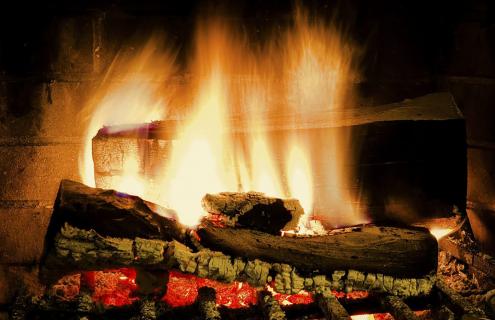
During the winter, pollution can decrease air quality, affecting those with respiratory issues, children, and the elderly. Not only is there more small particle pollution from people heating their houses with wood stoves and fireplaces, but this smoke is also more likely to be trapped in valleys like those in Keene and Swanzey. The indoor air quality of houses heated by wood or pellets may be worse than air outdoors because of poor ventilation.
Who struggles with bad air quality?
While poor air quality puts small children and the elderly at risk, those with heart problems or respiratory problems like asthma, emphysema, and bronchitis can suffer even more. The small particle pollution produced by wood-fired stoves and traffic is so tiny that it gets deep into your lungs and can enter your bloodstream. This can worsen existing heart problems, irritate your eyes or lungs and even trigger headaches or allergic reactions.
There’s an app for that
There are a few digital tools that can help you know when it is risky to exercise outdoors or when you need to turn up the air purifier in your house.
Text or email alerts from Enviroflash will let you know the air quality each day and a forecast. 
Two apps for your mobile device show you the Air Quality Index, an air quality forecast, and health information for safe activity levels outdoors. They also each connect with different air quality monitors or air purifiers you may already have in your house:
- Air Matters—also offers the pollen count and forecast, and levels of top allergens, along with a historical record of pollution over the month.
- Air Visual—easily displays the safety of the Air Quality Index number with a boy’s face who smiles for good and frowns for bad air quality.
Reduce your own pollution
If you heat your house with wood or pellets, how much pollution (like nitrogen oxides, carbon monoxide, small particle pollution, and creosote) you create depends upon how you burn the fuel and what kind of stove you use:
- If you burn wood products to heat your home, use an efficient EPA Certified wood stove—pellet stoves are even better.
- Burn with a bright, hot flame rather than allowing logs to smolder and release pollution that would otherwise burn, like creosote that collects inside the walls of your chimney.
- Wood burns most efficiently when its moisture content is below 20 percent, so stack wood neatly off the ground with the top covered to protect it from rain and snow. You can even invest in a moisture meter for under $20.
- Never burn green wood that has not been aged for at least 6 months.
- Choose hardwood over softwood because it burns hotter.
- Never burn garbage, cardboard, plastics, wrapping materials, painted materials or pressure-treated wood in your stove or fireplace.
- Clean ashes out regularly to promote air flow.
- Service your furnace and clean your chimney each year.
- Consider using an indoor air HEPA filter in the same room as a stove or fireplace. A study by the University of British Columbia indicates these filters can reduce indoor particle pollution by 60 percent.
